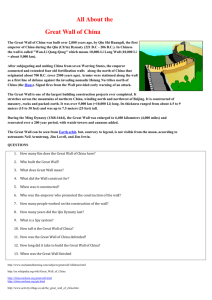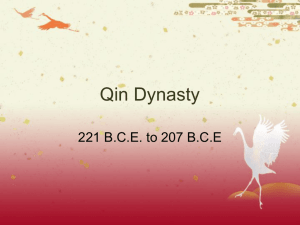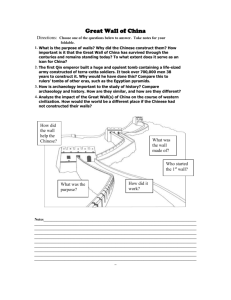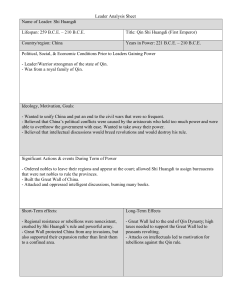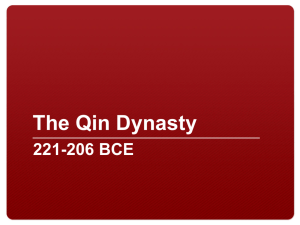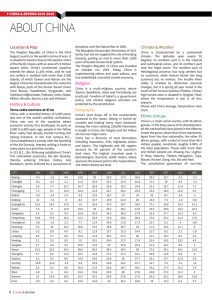Qin Dynasty & Great Wall Web Scavenger Hunt
advertisement
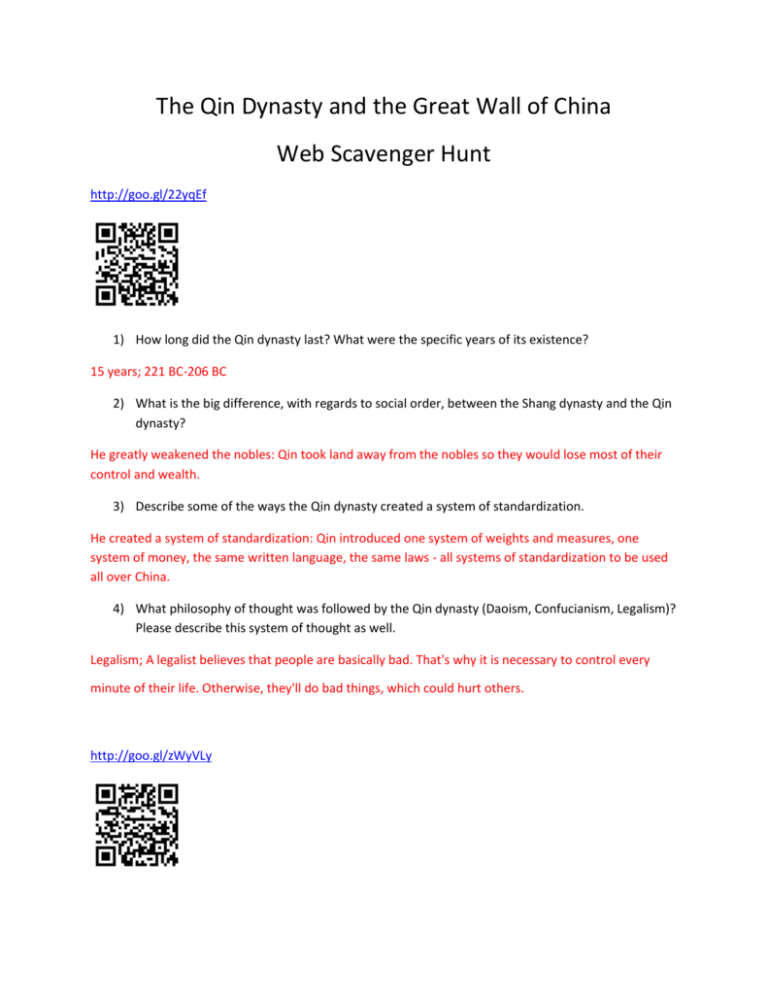
The Qin Dynasty and the Great Wall of China Web Scavenger Hunt http://goo.gl/22yqEf 1) How long did the Qin dynasty last? What were the specific years of its existence? 15 years; 221 BC-206 BC 2) What is the big difference, with regards to social order, between the Shang dynasty and the Qin dynasty? He greatly weakened the nobles: Qin took land away from the nobles so they would lose most of their control and wealth. 3) Describe some of the ways the Qin dynasty created a system of standardization. He created a system of standardization: Qin introduced one system of weights and measures, one system of money, the same written language, the same laws - all systems of standardization to be used all over China. 4) What philosophy of thought was followed by the Qin dynasty (Daoism, Confucianism, Legalism)? Please describe this system of thought as well. Legalism; A legalist believes that people are basically bad. That's why it is necessary to control every minute of their life. Otherwise, they'll do bad things, which could hurt others. http://goo.gl/zWyVLy 5) What was the name of China’s first emperor? Why do you think the country is named for him? Shi Huangdi; Practices and policies of the Qin Dynasty (221 BCE-206 BCE) were so influential and conducive to power that they were carried into the subsequent Han Dynasty and continue to flourish in present-day China. Central rule, written scripts, roads, the Great Wall, weights and measures, coinage, unified language. 6) What was found in the emperor’s tomb that was astounding? What was the emperor’s view of the afterlife? Qin Shi Huangdi was buried in a tomb accompanied by an army of hundreds of thousands of terracotta soldiers. The Emperor had been obsessed with immortality and spent years trying to find an elixir to life. 7) “While the first emperor of China did not live forever, in a sense he did.” What does this statement say about Qin rule? Many of the things that were created during his time are still in place today. http://goo.gl/qhJ2HY 8) What was Shi Huangdi’s original name? ((Look in your textbook and tell me what “Shi Huangdi” means)) Ying Zheng; “First Emperor” 9) Describe the fall of the Qin dynasty. Why did it fall and what occurred? His policies stirred resentment. Peasants, scholars, and nobles hated his ways. He died and the country fell apart to the hands of rebels. Country fell into civil war. 10) List things that were “not so good” during the Qin dynasty. People were forced labor on the Great Wall, roads, and irrigation. People were taxes heavily for projects. They were forced into military service. The law code was harsh. If one family member broke the law, everyone was punished. http://goo.gl/f2SjXG 11) What was the range of the Qin dynasty? The territory of the Qin Dynasty enlarged greatly, with its north border extending to present east Liaoning Province, Yinshan Mountains and the Great Bend of the Yellow River, the east border to the sea, the west to now Qinhai Province and the Gansu Plateau, and South to now Guangdong and Guangxi Province. 12) Why would Shi Huangdi eliminate all other characters, laws, and metrologies? He wanted to make everything unified from the top of the government down; all things equal so that he had total control. 13) What event occurred that forced the emperor to address the issue of building the unified Great Wall? The Hun state (one of the warring states) gained power and settled on the northern border of the Qin dynasty. 14) Why was the Wall not being effective? What did the emperor do to fix this issue? The sections of the wall were disconnected and could not stop enemies. Parts of the wall were weatherbeaten and broken down. He order the wall reconnected and restored. 15) How many men worked on the unification of the Wall? How long did it take to complete? The labors for this construction numbered 2,000,000, made up of the army under the command of Meng Tian, confiscated labors, captives of war and the guilty people against laws of that time. The whole construction lasted for 10 years. 16) Where did the Qin Great Wall stand in relation to the present-day Great Wall of China? This wall was longer than and lay slightly north to the Great Wall we see today, which was built by the Ming Dynasty about 1,500 years after. 17) Who built the modern day Great Wall of China? The Ming Dynasty
